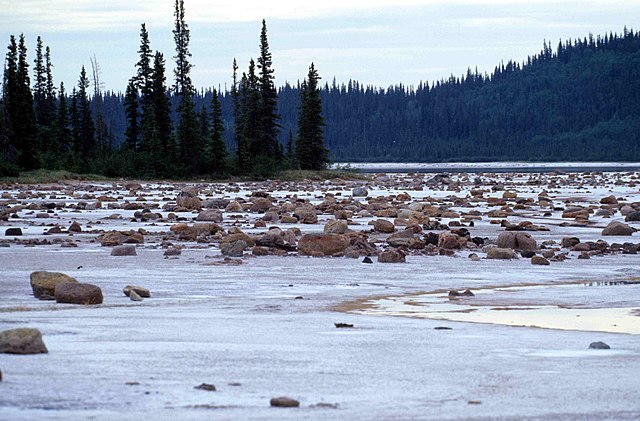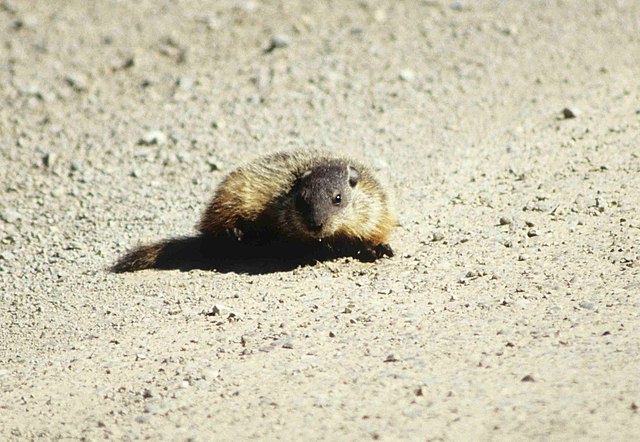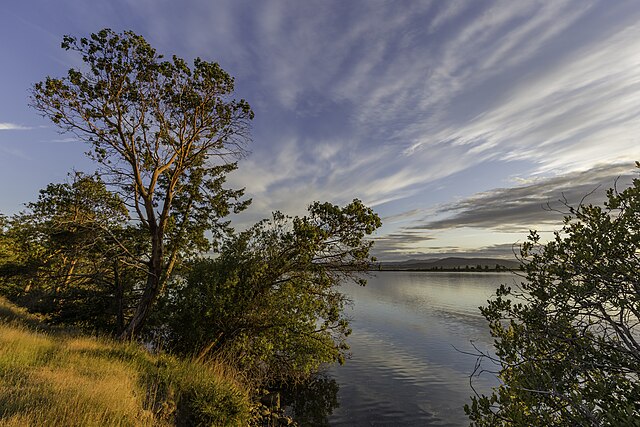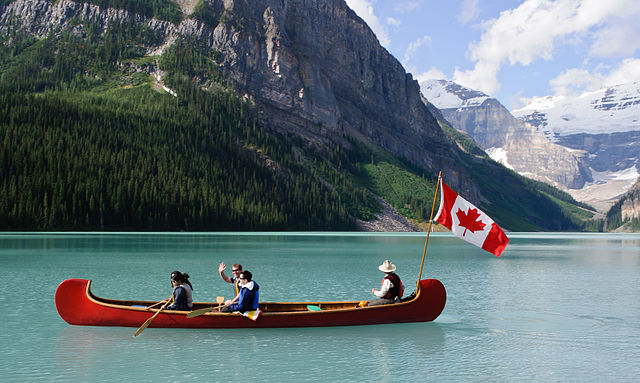Wood Buffalo National Park
Wood Buffalo National Park is the largest national park of Canada at 44,741 km2 (17,275 sq mi). It is in northeastern Alberta and the southern Northwest Territories. Larger in area than Switzerland, it is the second-largest national park in the world. The park was established in 1922 to protect the world's largest herd of free-roaming wood bison. They became hybridized after the introduction of plains bison. The population is currently estimated at about 3,000. It is one of two known nesting sites of whooping cranes.
Grosbeak Lake
Plains bison were transferred here from Buffalo National Park in the 1920s, but they carried disease and hybridized with the wood bison, causing their numbers to drop.
Wood bison (not pure)
Marmot
National parks of Canada are vast natural spaces throughout the country that are protected by Parks Canada, a government agency. Parks Canada manages the National Parks and Reserves in order to educator visitors, keep them safe, and ensure public enjoyment in ways that do not compromise the area for future generations. Protections include the management of Canadian wildlife and habitat within the ecosystems of the park. Within Parks Canada's governance is a wide range of protected areas, encompassing National Historic Sites, National Marine Conservation Areas (NMCA), and national park reserves. Canada established its first national park in Banff in 1885, and has since expanded its national park system to include 37 national parks and 10 national park reserves.
A visitor views an area of Sable Island National Park Reserve from a helicopter
A view of the Rockies from Banff National Park
Arbutus trees at sunset on Sidney Island in Gulf Islands National Park Reserve
Lake Louise, Banff National Park








